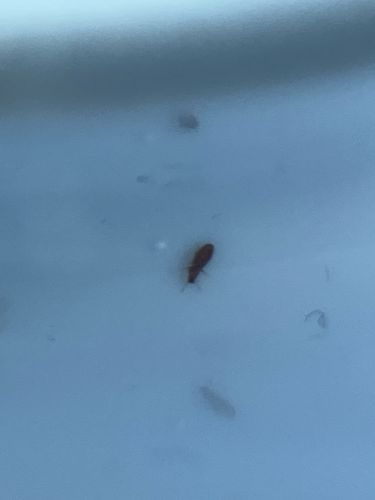Booklouse
Scientific Name: Liposcelis spp. (a common genus)
Order & Family: Psocodea, Liposcelididae
Size: 1-2 mm

Natural Habitat
Damp, warm, and dark environments; often found in books, stored food products, wallpaper, and other starchy materials. They thrive in high humidity conditions.
Diet & Feeding
Fungi, mold, minute particles of organic matter, starches (from books, wallpaper paste, cereal products), and dead insects.
Behavior Patterns
Nocturnal, cryptic, and often overlooked due to their small size. They are attracted to moisture and food sources, often found in large numbers where conditions are favorable. They do not bite humans but can be a nuisance pest.
Risks & Benefits
Potential risks include contamination of food products (though they generally do not cause disease), damage to books, documents, and historical artifacts by feeding on starch and mold. They are not known to have significant benefits other than being a food source for some predatory insects.
Identified on: 10/6/2025